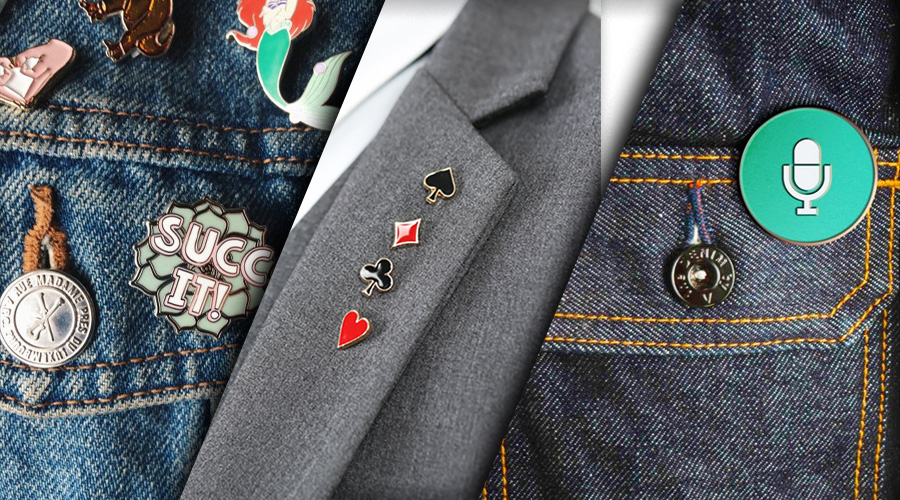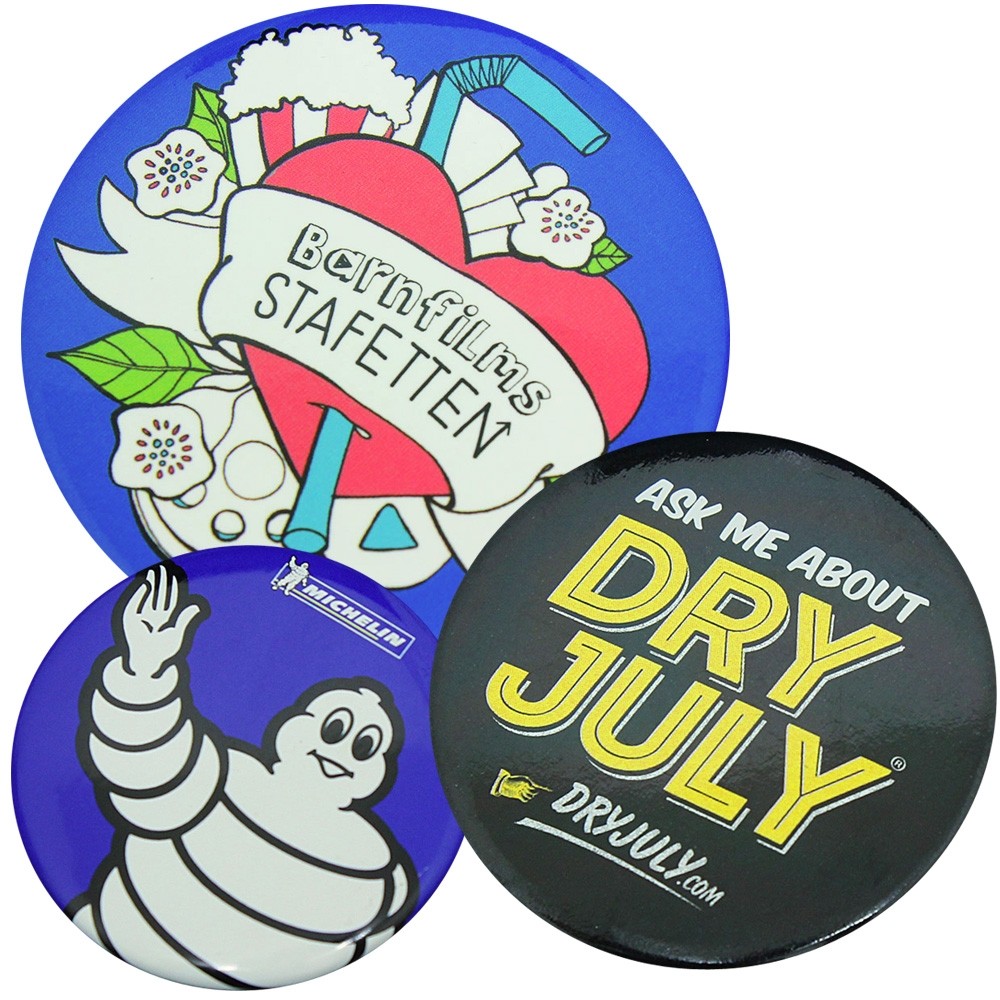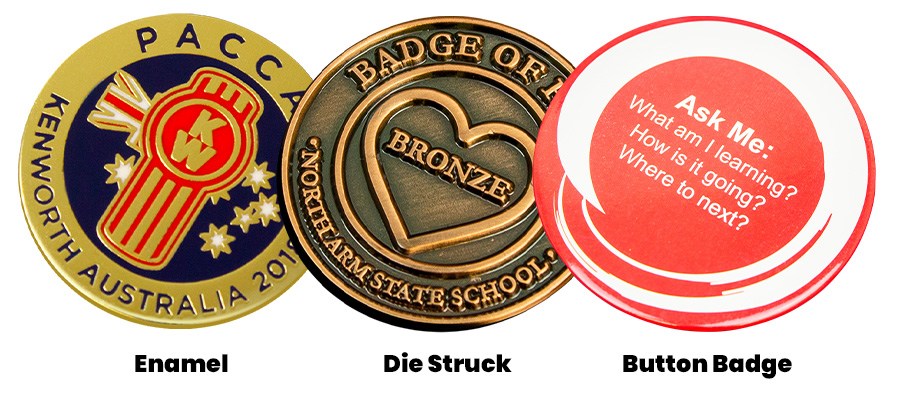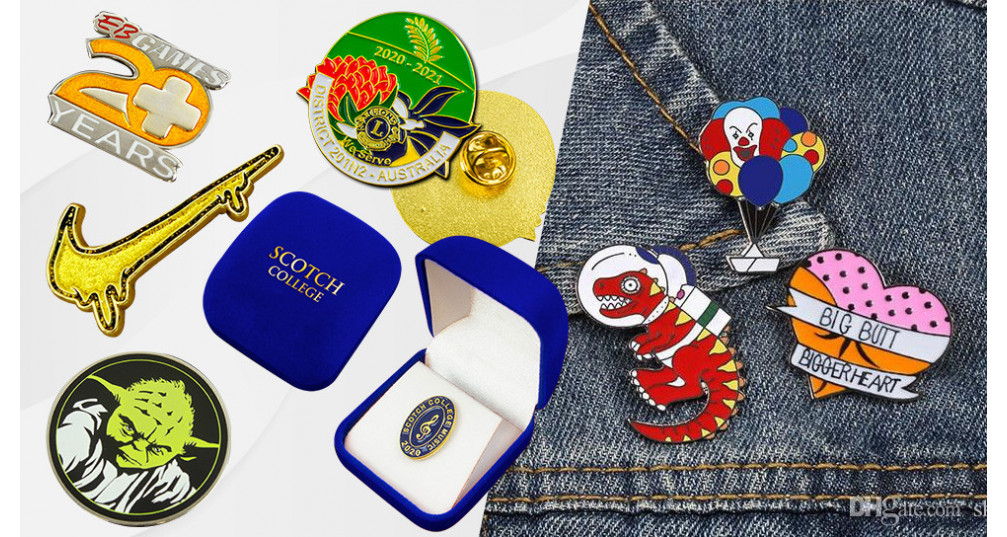What is a Lapel?
The lapel is the part on each side of a coat or jacket below the collar. They are folded back on either side of the front opening. Pins are placed here as it is a prominent enough position for people to see, and depending on the type of pin or badge, can send a message to those looking at the wearer.
Why Wear a Lapel Pin?
Pins can be ornamental and simply used to jazz up a simple outfit. However, they can also send a message about the wearer. Some may want to show off their political affiliations, while others may simply want to mix things up and have some fun.
The little details really can make a huge difference to your outfit. There are many ways to add a bit of personality to your look, and there’s nothing like bringing your own personal touch and style to a look. The lapel pin is a nice little addition to any outfit, it’s timeless and can add personality instantly. A good lapel pin isn't cheesy, though - so you want to avoid those novelty badges if you’re doing this for style purposes - it’s an arty piece to add to your outfit that looks stylish. You can add lapel pins to the most basic of outfits, and it’ll help to perk it up and bring it to life.
People just love vintage items and classic looks, which is why lapel pins have had quite the revival over the last few years. Vintage pins in particular can also help you to add some character and a piece of history to your look. It’s difficult to show off your personal style in a plain suit that you wear to the office, which is why opting for wearing lapel pins could be the best choice. Using them is your chance to tell people what you’re all about and have a little fun.
The History of Lapel Pins and Badges
Lapel pins and badges have been frequently used as symbols of achievements and to show off belonging to different organizations over time. For many, pin collecting and trading is a popular hobby. Pins are worn by those in the military, veterans, politicians, and other people who may want to send a message or show off their achievements.
The design of the lapel pins is actually quite interesting, as it starts off similarly to animation. Everything is hand drawn with a blue line, and then everything is planned out digitally with a light box. When a design is approved, it is inked, colored, and placed on a mechanical sheet. This is used as a blueprint for the pin, and appropriate measurements and call outs are made for the manufacturing parts.
How to Wear A Lapel Pin Properly
Believe it or not, there is a right and a wrong way to wear your pin. Many people get this wrong or get confused depending on the type of pin they have, and nobody wants to be embarrassed or told the right way to wear a pin when they are already wearing one!

Some people say that your pin should be worn on your left side as people tend to shake with their right hands, and doing so will cover up the pin. This is not necessarily important unless it’s a name badge, however. The best way to wear a pin can depend on the type of pin, the event, and other factors. As a general rule, you can use the following:
- Name tags - name tags are often worn above the pocket on the right side of your shirt. This allows you to make direct eye contact with people, and they can see your name as you shake hands with them.
- Lapel pins - lapel pins are worn on the left side of your jacket traditionally. This keeps them near your heart and is a sentimental way to wear them if something matters to you.
Some organizations do have specific rules about where you should be wearing the pin, so make sure you check this out if you’re unsure and think it could be important. As a general rule, if the pin means something to you, wearing it on the left side near your heart is best.
Now you know how to wear a lapel pin, understanding how to style it will ensure you look like a pro, even when styling one for the first time. You can choose matching cufflinks, and tie bars, alongside other accessories to ensure that your entire outfit remains cohesive and pops.
Where to Wear a Lapel Pin
There are many events and occasions where you can wear a lapel pin. People wear them to weddings and fundraisers, but even for everyday wear and work. There’s rarely an occasion where a lapel pin is unsuitable. They can seriously make your look pop and give it something a little different.
Just make sure they are suitable for work before you wear one. Some people prefer to place their pins inside the button hole of a suit jacket as this stops the need for making holes in the material, especially if the suit is expensive.
We’ve already established that you’re supposed to wear a lapel pin on your lapels, but what if you’re not wearing a blazer or suitable jacket? You can:
- Pin it on your tie - if you’re wearing a tie but not a jacket, wear your pin here instead. It’s most common to place the lapel pin toward the middle of the tie. Just bear in mind that if you’re wearing a jacket, it’s best practice to wear it here.
- Pin it on your dress shirt - if you’re not wearing a jacket or a tie, then you can place your pin on your dress shirt. This will remain on the left side of the shirt.
- Pin it on your coat - you can place pins on your coat if you want to display them on a more regular basis. If you pin them to suit jackets you will only be able to wear certain pins when you wear certain jackets, or you’ll end up making lots of holes in different items of clothing. Instead, pinning your favorite pins on your coat can ensure you’re able to wear your pins most days and give your outerwear and individual look. On more formal coats, there will always be a hole for lapel pins too.
The Traditional Lapel Pin vs The Name Badge vs The Button Badge
Now, it’s important to note that there’s a big difference between the lapel pin, name badge, and button badge. You shouldn’t refer to one when you really mean the other, or it’ll get pretty confusing.
The traditional lapel pin is a good way to add some style to your look and show off your personality. It looks great at formal events, but even at work and on regular days. There’s no limit to where you can wear them.

The button badge is usually a novelty item, and may display favorite bands, TV shows, and other things. If not a novelty item, then it may show off political affiliations or relate to a charity or organization. These badges are great for when you want to send a message, but not so great for formal looks or everyday wear.
The name badge is a work necessity in some places, and isn't something you will necessarily wear all the time. You will usually wear the name badge to work events and sometimes large family gatherings where you may not have met anybody before. Remember that the name badge is often worn on the right side so that when you shake hands you don’t hide it from the person you are greeting.
The Different Types of Lapel Pin
There are numerous kinds of lapel pins, and understanding them will help you when shopping for them. Many of them have different closures, and you’ll want to consider this and how sturdy they are before deciding where to wear them and whether you want to put a hole in your outfit. Different closures provide different levels of security. If buying vintage pins, it’s wise to check the mechanism on the back before purchasing.

- Stick pins - stick pins are the original style of pin and can add some vintage flair to an outfit. They are very popular as they are secure and can be easily added to an outfit.
- Boutonniere - this is made out of a flower, and used at events like weddings and proms. They came before the modern lapel pin that you see today, and tend to be placed on the left side over the heart. They should be noticeable but not too pronounced if you choose to wear one.
- Butterfly clutch - these are used by the military to distinguish between different units, and smaller in size so they don’t draw too much attention. This pin can be worn with other pins simultaneously.
- Magnetic clasp - this type of pin will use simple discs and won’t put a hole in your clothing. However, this means they are less secure and that they can weaken over time.
- Badge - these traditionally encouraged people to vote and showed what political affiliations people had. You don’t tend to wear them for formal events or to style your outfit.
- Long stem pin - these pins are meant to be noticed and can come in a variety of interesting designs. They tend to be for those who prefer to be more adventurous with their looks.
- Screw and nut - this is a type of mechanism that holds the pin firmly in place.
- Collar pin - a collar pin is attached to the collar rather than the lapel, and is less traditional but can definitely make a look more interesting. If you’re looking to make a statement and you want to steer away from the more vintage pins, this could be the right choice for you.
You can wear a lapel pin with almost anything, which is why so many people are bringing them back to life. They are traditionally worn with blazers and suit jackets, but you can also wear them with formal coats, a tuxedo or directly on your sweater or shirt. Just be very sure before you make a hole in your clothing for your pin, especially if the item is a delicate fabric. Delicate fabrics may not take kindly to being pierced with a pin, and they definitely shouldn’t be pierced multiple times if there’s a chance they won’t hold up under the weight of a pin or the hole could get larger.
Give Your Look an Edge
Choosing a great lapel pin can make you look more suave and give your outfit an elegant element in no time whatsoever. If you’ve been trying to think up ways to show off your personality and style, this could be the right way to do it.
An article by Brandon Vallorani on Forbes outlines that studies have long demonstrated that people make a judgement based on first impressions. So ensuring your staff and team members look great can provide a huge boost to your business, and lapel pins badges and brooches can be a seriously versatile products to help do this.
You can show that you know your style and that you’re confident putting together an outfit with a simple lapel pin. It’ll get you noticed and while subtle, will give your look an edge over the rest.
Hopefully this definitive guide has helped you build confidence as you shop for lapel pins and pin them to your clothing - happy pin browsing!



